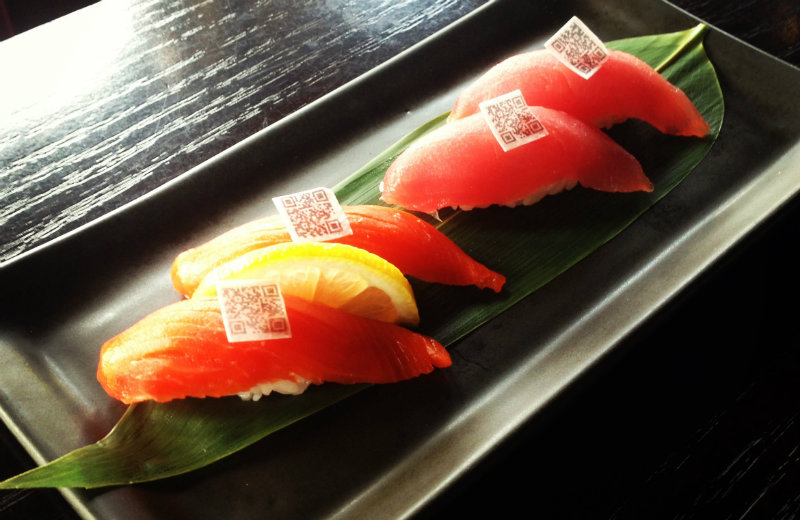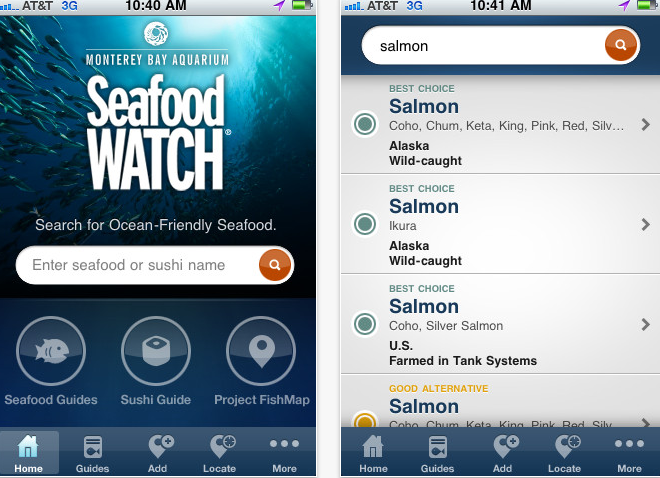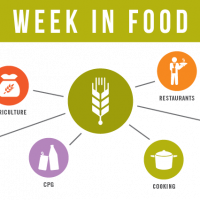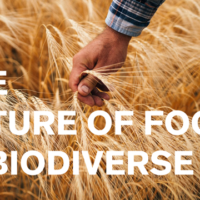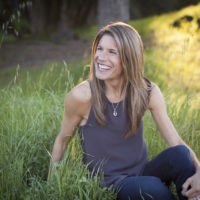Overfishing – removing fish from the ocean at faster rates than they can reproduce – has become a huge concern in recent decades. Many of the world’s fish populations are at levels so low that recovery, if possible, requires long term, innovative solutions. Due to increased demand, overfishing, illegal fishing and buycatch (large nets or trawls used to catch one species often times kill other, unintended species), our seafood supply is diminishing and the health of our oceans is in danger.
The good news is that the sustainable seafood industry is working to improve the viability of sustainable fishing practices, as well as to make it easier for consumers to know where their fish comes from. The following are three innovative ways technology is making a more sustainable future for fish possible.
Edible QR Codes on Sushi
Rob Ruiz executive Chef of San Diego’s Harney Sushi is garnishing his cuisine with education. Rather than having his customers eat blindly in an industry run rampant with fish fraud and mislabeling, he decided to finish his plates with edible QR codes that trace the origins of his menu selections. The codes are printed on rice paper with water-based ink , similiar to birthday cake graphics, and diners can scan each roll or piece to see the security of a species’ global stock, where the fish came from, and images of the actual fishermen who hooked their meal. Since rolling out the QR codes last April Harney Sushi’s sashimi sales have doubled. Armed with the confidence that what they are eating is good for them, the planet and the people who catch it, diners are more open to culinary adventure. Read more on Ruiz’s QR sushi program on Business Insider or visit their website.
Monterey Bay Aquarium’s Seafood Watch App
Created by the Monterey Bay Aquarium, this free app makes up-to-date recommendations for choosing sustainable fish at restaurants and stores where transparency in labeling may be hard to come by. The app uses your phone’s GPS to load the proper regional guide for you, allows you to sort seafood choices by “Best Choice, “Good Alternative” or “Avoid” and highlights MBA’s “Super Green” list that is best for your and the oceans. The latest Project FishMap feature lets you add restaurants and stores in the U.S. where you’ve found sustainable seafood to the app’s database. You can download the app on GooglePlay or iTunes or learn more about the program here.
Fish 2.0–Connecting New Businesses and Investors
To help catapult viable solutions to the challenges facing the $390 billion seafood industry, Monica Jain launched Fish 2.0, a business competition that connects sustainable fisheries and aquaculture businesses with potential investors. According to Jain, some of the most innovative, game-changing proposals are information technology solutions that tackle software, databases and brokerage. Some competitors are developing systems to track the health of wild populations, verify the origin of products, and help fishermen make higher profits. Phase three of the competition is currently underway and projects will continue development through September 13th. To learn more visit Fish20.org.
Bonus: Dan Barber on His Adoration of Fish
Dan Barber, James Beard award winning Chef/Owner of Blue Hill, gives a TED talk on his love affair with fish, highlighting the practices of Veta la Palma, a vast farming estate covering more than 27,000 acres in the heart of the Marshlands of Spain’s Guadalquivir River, and arguably the world’s first “Sustainability Plus” fish farm. Read more here.

